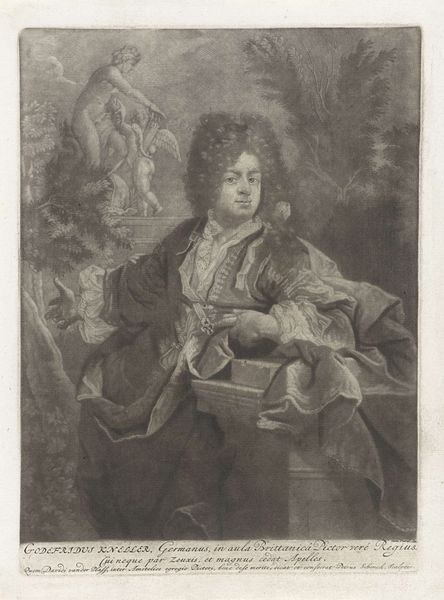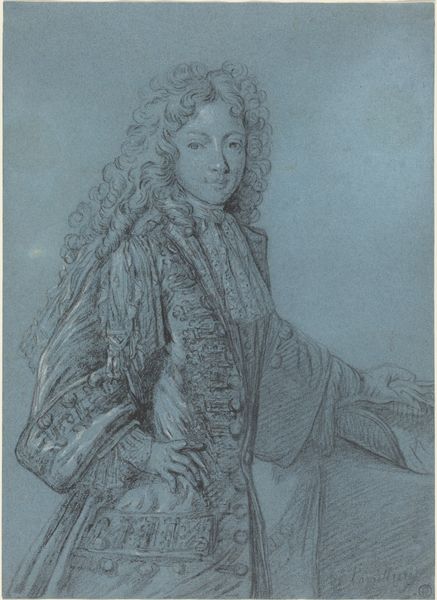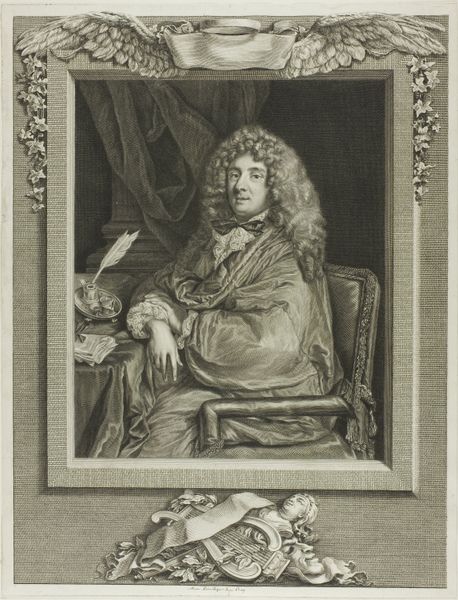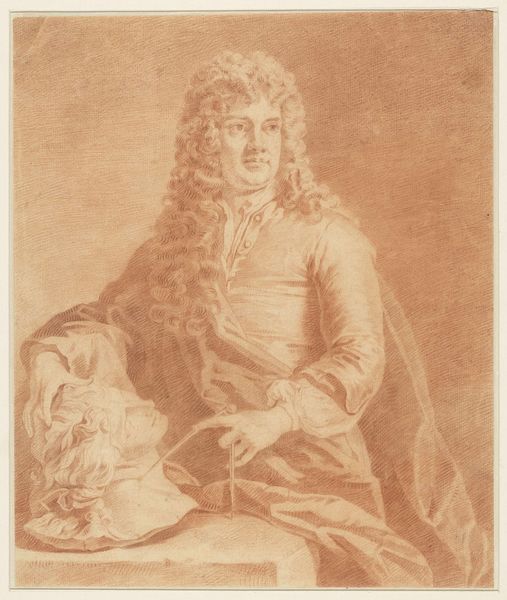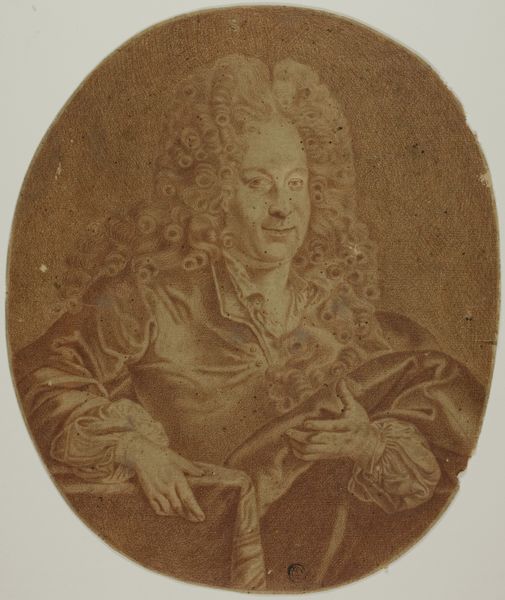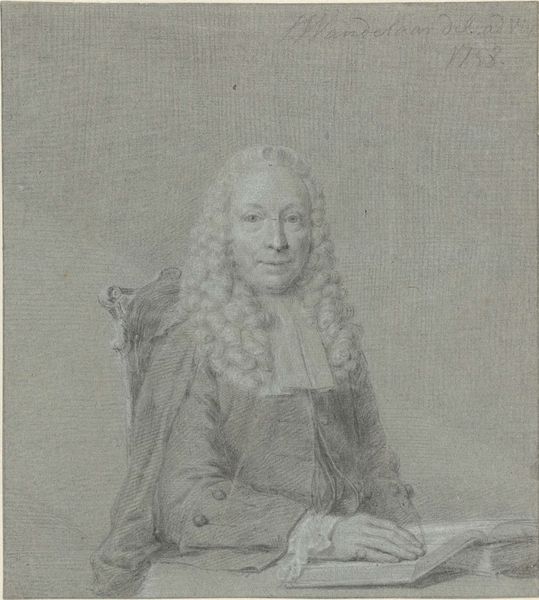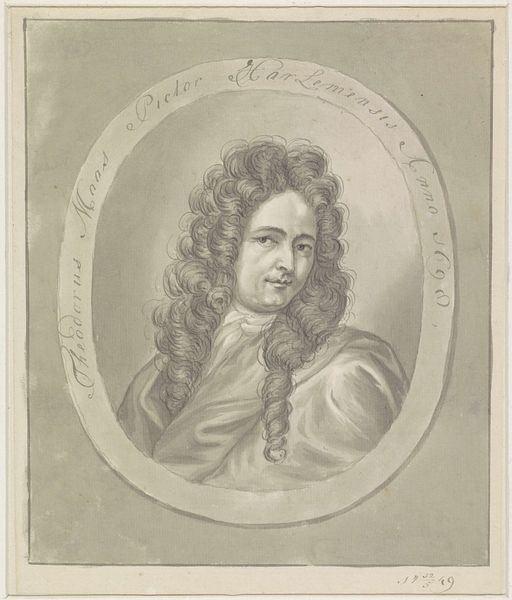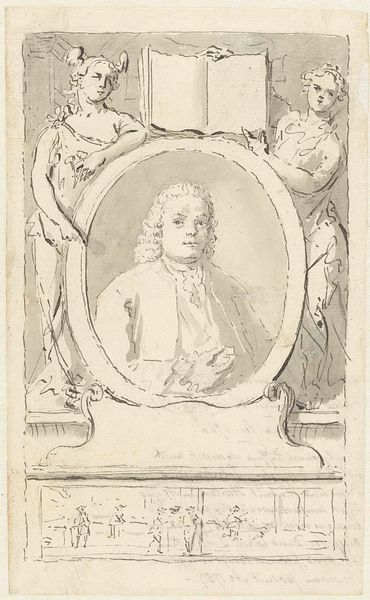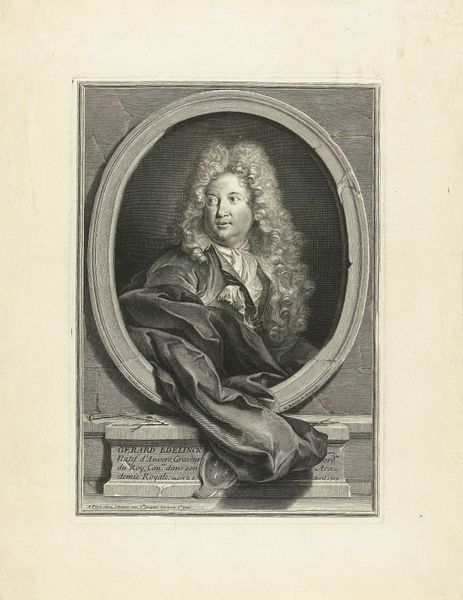
drawing, charcoal
#
portrait
#
drawing
#
baroque
#
dutch-golden-age
#
charcoal drawing
#
charcoal
Dimensions: height 320 mm, width 238 mm
Copyright: Rijks Museum: Open Domain
Curator: Jacob Houbraken rendered this portrait of Godfried Schalcken sometime between 1708 and 1780. It’s a charcoal drawing now residing here at the Rijksmuseum. Editor: My immediate impression is one of mystery. The tonality created by the charcoal imparts this sense of gentle age, or perhaps a sort of faded glory about the subject. What draws the eye for you? Curator: The technique really stands out. Consider the way Houbraken utilized charcoal—typically a preliminary medium—to produce such a finished portrait. It blurs that line between preparatory sketch and artwork itself, defying strict hierarchical art categories. Editor: That blurring interests me too, especially thinking about Schalcken as an artist famous for his candlelight paintings. Look at how Houbraken mimics this source of light through the dark depths of charcoal and then the highlights throughout the piece. Curator: And Schalcken holds this candle... he appears to have mastery of this object. Are we seeing tools that are connected to craftsmanship here? What meaning do we attach to this gesture or pose? Editor: I think so. I would agree, by showing him holding a tool central to his art, Houbraken communicates how candlelight became Schalcken’s hallmark. Beyond mere physical light, it speaks of the ‘inner light’ or illumination a great artist possesses. He quite literally and figuratively holds that. Curator: His art, of course, found patronage among Europe’s elite; there was real value placed on Dutch Golden Age artistry and craftsmanship. Consider the consumer value of his portraits and their cultural reach; How did an object created under his skilled hands accrue significance beyond mere surface-level representation? Editor: Good point. I can’t help but focus on his confident gaze and slightly parted lips as well. Perhaps there is the idea of whispered secrets to which only true artists know. Curator: So the piece invites us, doesn’t it, to reflect on the means of artistic production, to examine a single drawing made in the Baroque era as representative of greater themes in materiality, value, and labor. Editor: Precisely. Looking deeper reveals echoes that bounce from symbolism and artistic identity back into time itself, illuminating stories that have been obscured by age and changing context. It's an almost ghostly revelation.
Comments
No comments
Be the first to comment and join the conversation on the ultimate creative platform.
